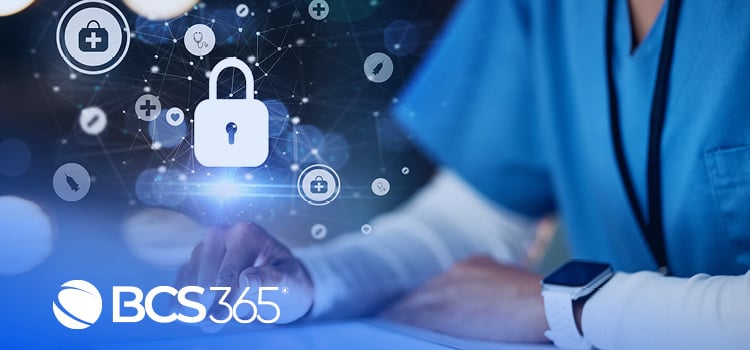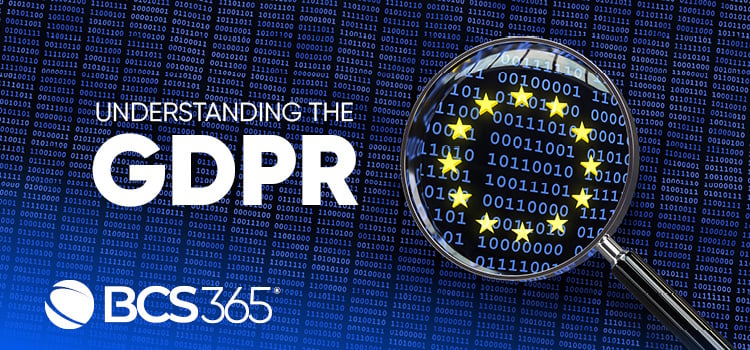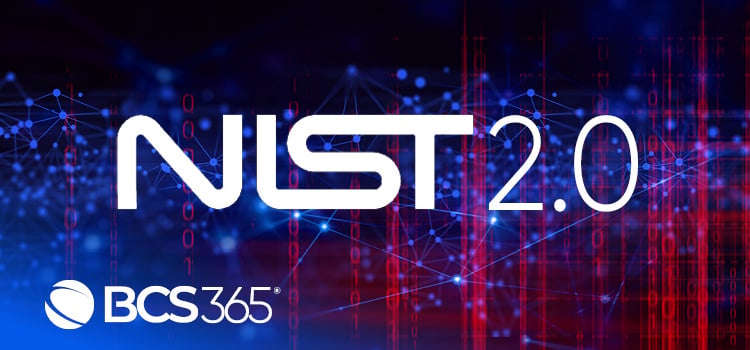Latest Managed IT, Cybersecurity, Cloud + DevOps News
Why Companies Should Promote a Cyber Savvy Culture

In the realm of cybersecurity, while technology and systems are undeniably crucial, it’s the human factor that often poses the greatest risk. Employees, whether inadvertently or not, can be the gateway for cyber attackers. Clicking on a malicious email link, using weak passwords, or neglecting software updates can inadvertently grant access to cybercriminals. By fostering a culture of cyber vigilance, we can transform employees from potential liabilities into our primary line of defense against cyber threats.
CONTINUE READINGHow to Protect Against E-Signature Software Phishing Scams

The adoption of electronic signature (e-signature) software has become increasingly common among businesses seeking to streamline document workflows and enhance efficiency. However, alongside the benefits of e-signature solutions comes the risk of phishing scams targeting unsuspecting users. In recent months, there has been a surge in e-signature software phishing scams, with cybercriminals exploiting popular platforms like DocuSign to deceive users and steal sensitive information. In this blog, we’ll delve into the tactics used by e-signature software phishing scams, explore the potential consequences for businesses, and discuss strategies for protecting against these threats.
CONTINUE READINGMeasuring ROI on Cybersecurity Investments

Cybersecurity threats are ever-changing and organizations are constantly challenged to make strategic investments that effectively mitigate risks and safeguard sensitive data. As a managed service provider specializing in cybersecurity, we understand the return on investment (ROI) of these choices is crucial for both our clients and ourselves. But how do we measure the ROI of cybersecurity solutions in a tangible and meaningful way? Let’s explore this question by drawing parallels between cybersecurity investments and the seemingly mundane yet essential item: soap.
CONTINUE READINGCybersecurity Regulations for Life Sciences

Life sciences companies such as pharmaceutical, medical technology, and digital health management, all hold vast amounts of important, highly sought-after data in the cybercrime world. Cybercrimes can be damaging for any type of business, but data breaches for life sciences organizations can be particularly devastating because of the nature of the data. Intellectual property and Protected Health Information (PHI) are both incredibly valuable forms of information.
CONTINUE READINGRemote Monitoring and Management: Enhancing IT Efficiency

In the fast-paced digital landscape of today, businesses rely heavily on their IT infrastructure to drive operations, enhance productivity, and ensure seamless customer experiences. However, maintaining and managing this complex network of systems, applications, and devices can be a daunting task, especially for organizations without dedicated IT resources. This is where IT managed services providers (MSPs) step in, offering expertise and support to keep businesses running smoothly.
CONTINUE READINGHow MSPs Can Help Ensure Data Security for HIPAA Compliance

In today’s rapidly evolving healthcare landscape, the protection of sensitive patient data is of paramount importance. Regulations such as the Health Insurance Portability and Accountability Act (HIPAA) are nothing new, but the risks and cyber threat landscape are ever-changing. According to the U.S. Department of Health and Human Services, ransomware and hacking are the primary cyber-threats in health care. Over the past five years, there has been a 256% increase in large breaches reported to OCR involving hacking and a 264% increase in ransomware. In 2023, hacking accounted for 79% of the large breaches reported to OCR. The large breaches reported in 2023 affected over 134 million individuals, a 141% increase from 2022. Healthcare organizations face stringent requirements to safeguard patient information and maintain compliance with regulatory standards. In fact, the American Hospital Association points out that, “stolen health records may sell up to 10 times or more than stolen credit card numbers on the dark web.” Ensuring data security and HIPAA compliance can be a complex and challenging task for healthcare providers, especially in the face of evolving cybersecurity threats and technological advancements.
CONTINUE READINGNavigating GDPR Compliance: Essential Steps

The General Data Protection Regulation (GDPR) is the most strict privacy and security law in the world. It was drafted and passed by the European Union in 2018, and it applies to any organization that targets or collects data related to people in the EU. In today’s digital landscape, data privacy has become a paramount concern for individuals and businesses alike. With the advent of GDPR, organizations Navigating GDPR compliance can be complex and daunting, but by understanding the essential steps businesses can not only meet regulatory requirements but also build trust with their customers and stakeholders.
CONTINUE READINGDefend Against Business Email Compromise with Managed Email Security

Email is one of the most widely-used tools for business communication, collaboration, and conducting of business. With its widespread use comes an ever-growing threat – business email compromise (BEC). Business email compromise refers to cyber attacks where malicious actors impersonate legitimate entities to deceive individuals into disclosing sensitive information, initiating fraudulent transactions, or compromising business systems. For small to medium-sized businesses (SMBs), the risk of falling victim to BEC attacks is particularly great, given their limited resources and cybersecurity expertise. In this blog, we’ll explore the dangers of business email compromise to SMB’s and why a managed email security program is essential in safeguarding against this pervasive threat.
CONTINUE READINGBuilding a Comprehensive Incident Response Plan

Cyber threats lurk around every corner these days, so having a robust incident response plan is no longer optional – it’s essential. As a leading managed IT services provider, we understand the importance of being proactive in safeguarding your organization’s data and infrastructure. In this blog, we’ll delve into the essential components of building a comprehensive incident response plan that can mitigate risks, minimize the impact of security incident, and ensure business continuity.
CONTINUE READINGExploring NIST CSF 2.0 for Businesses of Every Size and Sector

Cyber threats loom large over businesses regardless of their size or sector, and the need for a comprehensive cybersecurity framework is more important now than ever. The National Institute of Standards and Technology (NIST) has emerged as a beacon of guidance for organizations looking to bolster their cybersecurity defenses. NIST released their Cybersecurity Framework (CSF) 2.0 in March of 2024, and this new version is more comprehensive, adaptable, and accessible for businesses regardless of size or sector. “Developed by working closely with stakeholders and reflecting the most recent cybersecurity challenges and management practices, this update aims to make the framework even more relevant to a wider swath of users in the United States and abroad,” according to Kevin Stine, chief of NIST’s Applied Cybersecurity Division. The previous version of the CSF was primarily applicable to large-scale infrastructure such as power plants and hospitals. A new key function of the framework is the “Govern” function, which joins Identify, Protect, Detect, Respond and Recover.
CONTINUE READINGManaged IT, In-House IT, Hybrid Model: Finding the Right Fit

The role of IT in the business world is more significant now than ever. As businesses strive to stay competitive and resilient, the question of how to manage IT services becomes paramount. Should you fully embrace a managed IT approach, maintain an in-house IT team, or explore the best of both worlds with a hybrid model? Let’s delve into each option, backed by insightful statistics, to help you decide which model is best for your business.
CONTINUE READINGThe Human Factor: Importance of Employee Training in Cybersecurity

February 16, 2024
CONTINUE READINGCybersecurity Essentials for Small Businesses

Introduction: The Cyber Landscape for Small Businesses February 8, 2024
CONTINUE READINGHow to Grow Your Business with Managed IT Services

Introduction: Understanding the Role of Managed IT Services in Business Growth January 25, 2024
CONTINUE READINGUnveiling the Cybersecurity Risks of GenAI

The Cybersecurity Risks of Generative Artificial Intelligence (GenAI) January 19, 2024
CONTINUE READINGTopics
CybersecurityThe Role of AI and Machine Learning in Cybersecurity

Cybersecurity Fortified: Explore the Pivotal Role of AI and Machine Learning (ML) in Proactive Threat Detection. January 15, 2024
CONTINUE READINGTopics
CybersecurityThe Evolving Threat of Ransomware

How Ransomware Attacks Are Evolving and How to Stay Protected
CONTINUE READINGTopics
CybersecurityThe Top 10 Cybersecurity Risks for 2024

Our Predictions for the Top 10 Cybersecurity Risks for 2024 As we begin a new year, cybersecurity remains a paramount concern for businesses of all sizes. As a managed security services provider dedicated to safeguarding our clients’ digital assets, we foresee 2024 presenting an array of complex cybersecurity challenges. Understanding these risks is crucial to implementing proactive security measures in the year ahead. Here are the top 10 cybersecurity risks we predict for 2024:
CONTINUE READINGTopics
CybersecurityWhy You Need an Independent Cybersecurity Risk Assessment

In today’s interconnected landscape, businesses store vast amounts of sensitive data. This information is constantly under attack by cybercriminals looking to exploit vulnerabilities. An independent cybersecurity risk assessment acts as a sentinel, meticulously scrutinizing an organization’s digital infrastructure, identifying weak links, and identifying potential breaches before they occur.
CONTINUE READINGTopics
CybersecurityThe Crucial Role of Threat Intelligence in Email Security

Despite many other communication channels being available, email remains the lifeblood of communication for many businesses. As cyber threats increase, it is now more important than ever to ensure the safety of your email communication. One of the most effective strategies to fortify your email security program is the integration of threat intelligence. Learn how threat intelligence strengthens email security and protects your organization from cyber threats.
CONTINUE READINGTopics
CybersecurityThe Importance of Ongoing IT Vulnerability Management

The threat of cyberattacks looms larger than ever, making the implementation of a robust vulnerability management program imperative for any business. With the continuous evolution of sophisticated cyber threats, organizations must take proactive steps to safeguard their data and systems. Partnering with a trusted managed services provider (MSP) to establish an ongoing vulnerability management and remediation program can be the pivotal step toward fortifying your digital infrastructure.
CONTINUE READING
